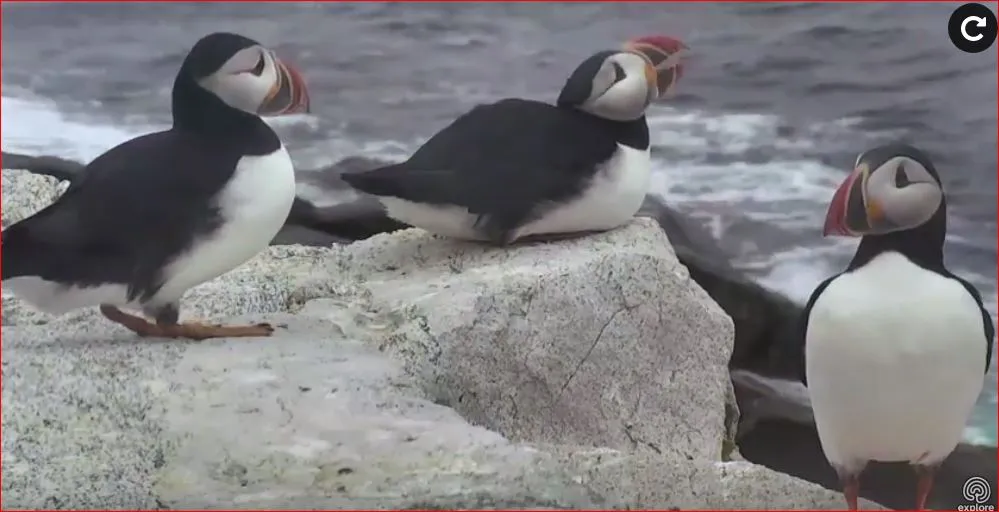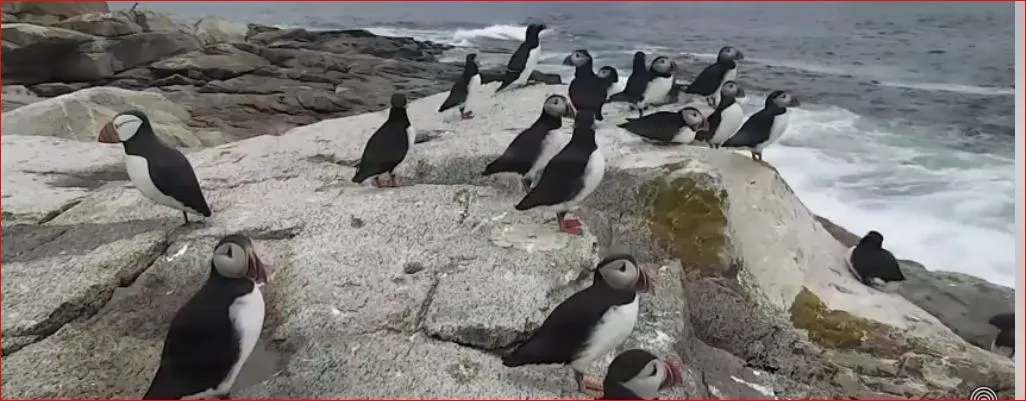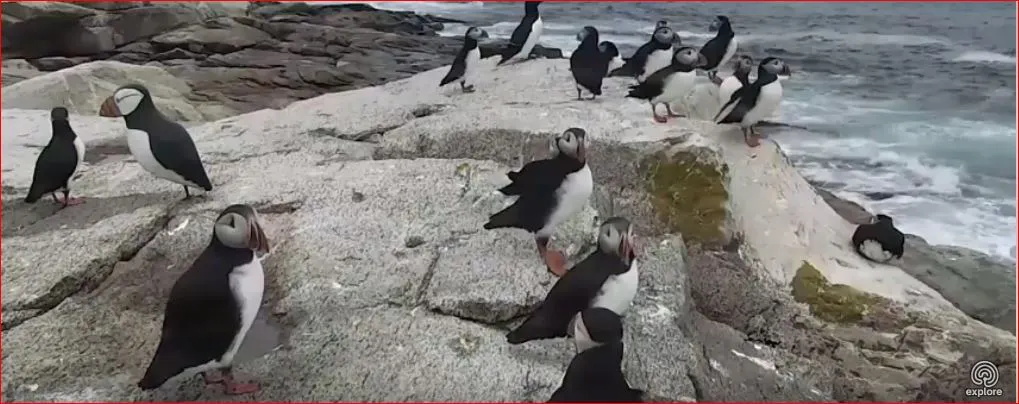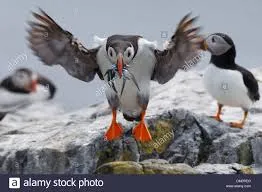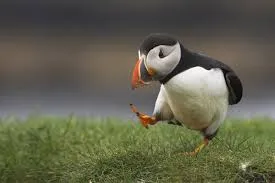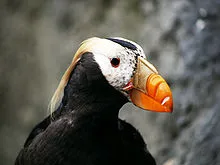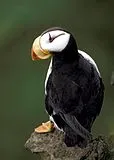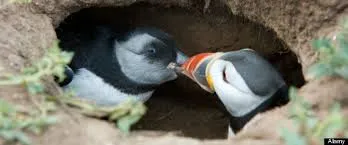
Ever since i was a little girl i lovedthe puffin. My auntie lived in baltimore,maryland and when i would visit she'd takeme to the national aquarium to see the puffins. id sit for hours making their sounds making friends. even years later i love them, heres some info about them
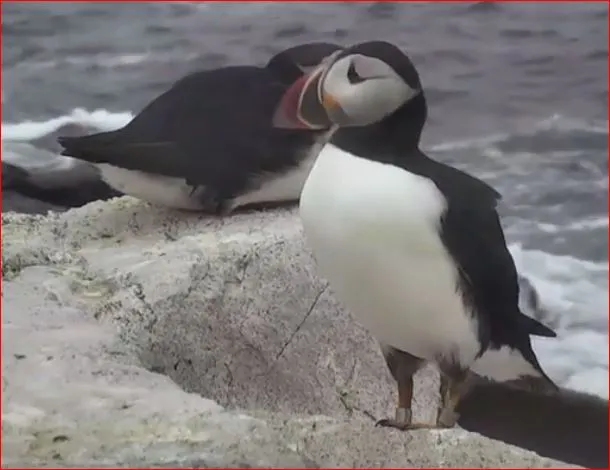
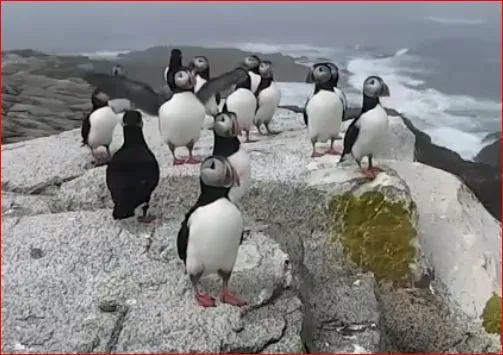

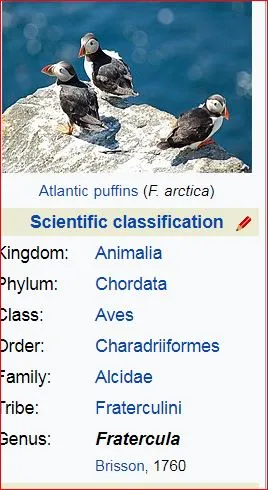
Puffins are any of three small species of alcids (auks) in the bird genus Fratercula with a brightly coloured beak during the breeding season. These are pelagic seabirds that feed primarily by diving in the water. They breed in large colonies on coastal cliffs or offshore islands, nesting in crevices among rocks or in burrows in the soil. Two species, the tufted puffin and horned puffin, are found in the North Pacific Ocean, while the Atlantic puffin is found in the North Atlantic Ocean.
All puffin species have predominantly black or black and white plumage, a stocky build, and large beaks. They shed the colourful outer parts of their bills after the breeding season, leaving a smaller and duller beak. Their short wings are adapted for swimming with a flying technique under water. In the air, they beat their wings rapidly (up to 400 times per minute)[1] in swift flight, often flying low over the ocean's surface.
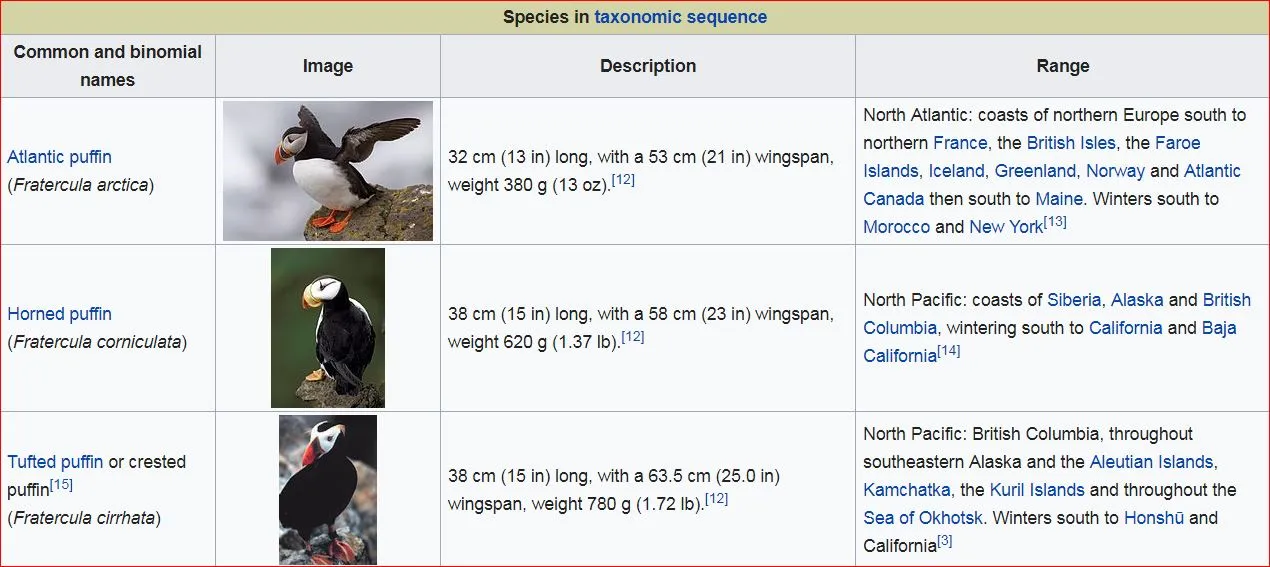
Puffins breed in colonies on coasts and islands; several current or former island breeding sites are referred to as Puffin Island. The male Atlantic puffin builds the nest and exhibits strong nest-site fidelity. Both sexes of the horned puffin help to construct their nest. Horned puffin burrows are usually about 1 meter (3.3 feet) deep, ending in a chamber, while the tunnel leading to a tufted puffin burrow may be up to 2.75 meters (9.0 feet) long. The nesting substrate of the tufted and Atlantic puffins is soft soil, into which tunnels are dug; in contrast the nesting sites of horned puffins are rock crevices on cliffs.[16] The Atlantic puffin burrow is usually lined with material such as grass, leaves and feathers but is occasionally unlined. The eggs of the Atlantic puffin are typically creamy white but the odd egg is tinged lilac.
Where rabbits breed, sometimes Atlantic puffins breed in rabbit burrows.
Puffins form long-term pair bonds or relationships. The female lays a single egg, and both parents incubate the egg and feed the chick (or "puffling"[17]). The incubating parent holds the egg against its brood patch with its wings. The chicks fledge at night. After fledging, the chicks spend the first few years of their lives at sea, returning to breed about five years later. Puffins in captivity have been known to breed as early as three years of age.
After breeding, all three puffin species winter at sea, usually far from coasts and often extending south of the breeding range.[11]
Iceland is the home to most of the Atlantic puffins with about 10 million individuals.[18] The largest single puffin colony in the world is in Westmann Isles, islands that belong to Iceland. In 2009, scientists estimated the number of nests to be 1.1 million,[19] and number of individuals there is estimated to be up to 4 million.[18]
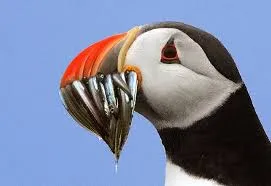
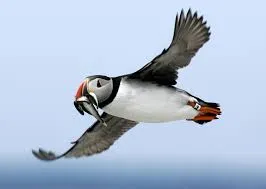
Like many auks, puffins eat both fish and zooplankton, but feed their chicks primarily with small marine fish several times a day. The prey species of the Atlantic puffin include the sandeel, herring and capelin.[20][21] The puffins are distinct in their ability to hold several (sometimes over a dozen) small fish at a time, crosswise in their bill, rather than regurgitating swallowed fish. This allows them to take longer foraging trips, since they can come back with more food energy for their chick than a bird that can only carry one fish at a time. This behaviour is made possible by the unique hinging mechanism of their beak, which allows the upper and lower biting edges to meet at any of a number of angle
